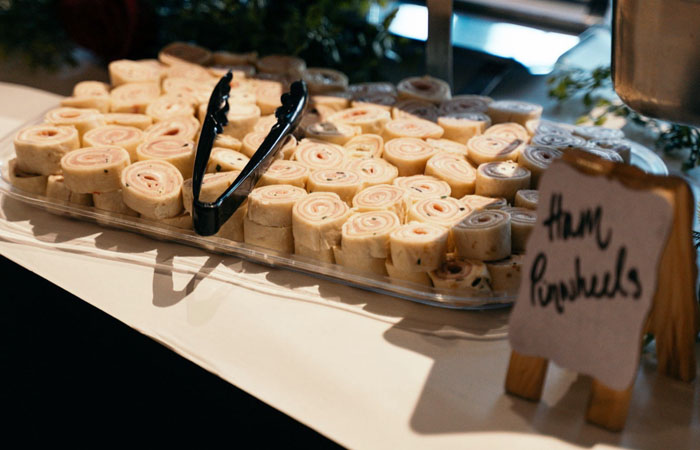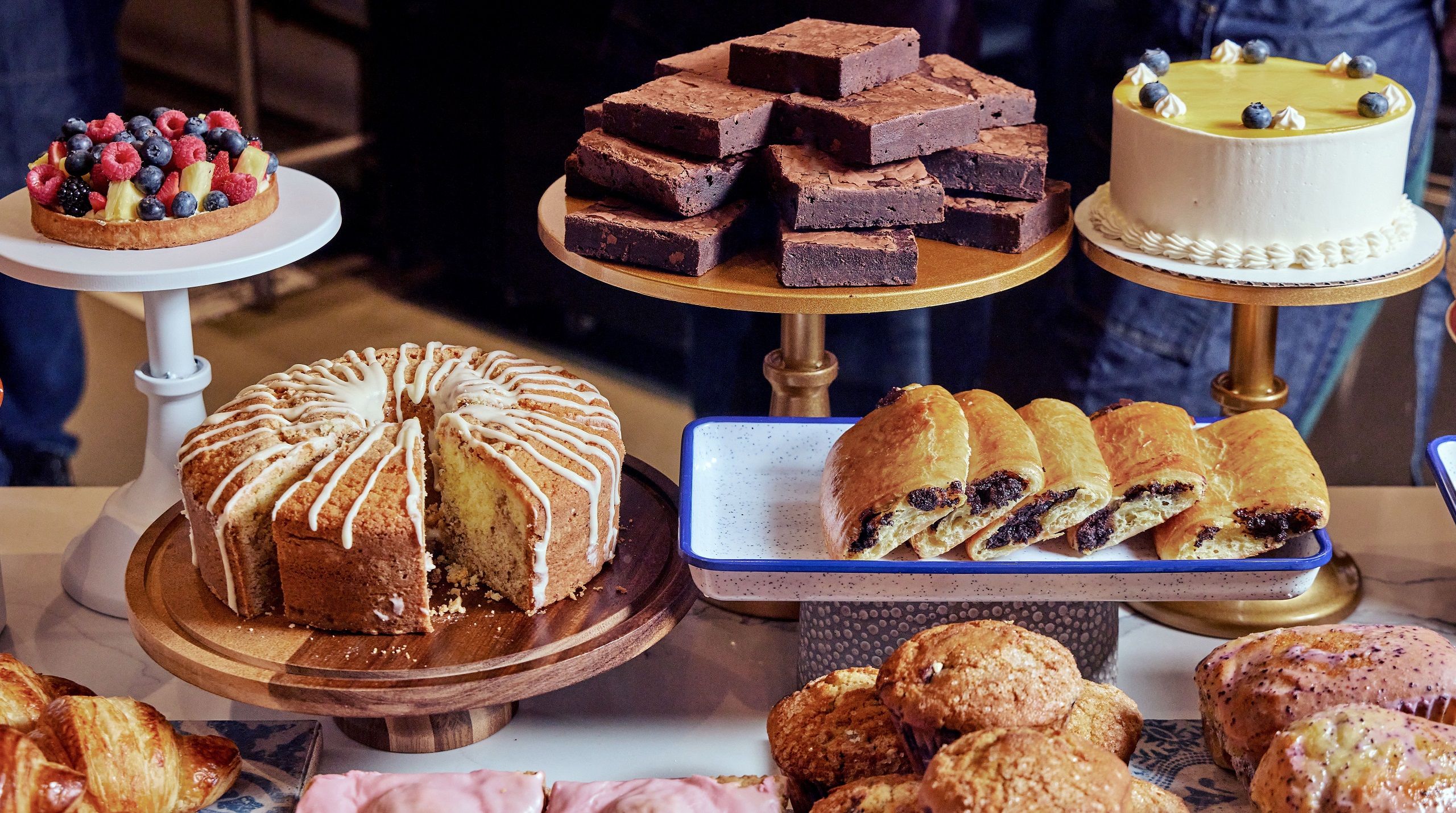Special Birthday Party Maddington Ideas for an Unforgettable Occasion
Special Birthday Party Maddington Ideas for an Unforgettable Occasion
Blog Article
Understanding the Art of Bakery Products: From Freshly Baked Breads to Tempting Pastries and Finger Foods
From the science behind the ideal loaf of bread, where fermentation and gluten growth play critical functions, to the skill needed for developing split pastries, each facet discloses an engaging narrative of workmanship. The convenience of finger foods illustrates just how flavor and structure can be artfully combined to engage diverse preference preferences.
The Science of Bread Making
At the heart of every loaf of bread exists a fascinating interplay of chemistry and biology. The procedure of bread making starts with the combination of flour, salt, water, and yeast-- each component playing a vital duty in the last product.
Yeast, a living microorganism, ferments the sugars present in the flour, creating co2 and alcohol while doing so. The carbon dioxide gas develops bubbles in the dough, causing it to rise and create a light structure. The temperature and humidity during fermentation significantly affect yeast task and, as a result, the bread's taste and structure.

Learning Pastry Techniques
Exactly how can one attain the fragile equilibrium of texture and flavor that specifies remarkable pastry? Understanding pastry strategies calls for a deep understanding of ingredients, approaches, and the science behind them. Fundamental to this craft is the selection of high-grade components-- flour, butter, sugar, and eggs-- each playing a vital function in the end product's taste and texture.
The technique of lamination, which entails folding layers of dough and butter, creates the preferred flakiness in breads like croissants and smoke pastry. Accuracy in temperature is crucial, as butter ought to stay chilly to guarantee optimal layers. Similarly, correct blending approaches, such as the creaming strategy for cakes, ensure also consolidation of air and fat, leading to a light and airy crumb.
In addition, keeping the ideal humidity levels throughout cooking can substantially impact the end result, making certain that breads increase correctly and achieve that golden-brown surface. Lastly, the art of bread likewise demands persistence and practice; each attempt enhances one's ability and understanding of the intricate balance called for to develop alluring pastries that delight the senses. Mastery in these strategies eventually distinguishes a skilled pastry chef from an amateur.
Types of Finger Foods
The globe of cooking delights prolongs past pastries to incorporate a vast variety of finger foods, which are celebrated for their ease and adaptability. These bite-sized deals with are best for social gatherings, providing a range of flavors and textures that accommodate diverse palates.

On the sweeter side, small tarts and bite-sized cupcakes supply a fascinating coating to any kind of dish, appealing to those with a craving for sweets. Additionally, cheese and charcuterie boards work as an innovative selection, permitting visitors to personalize their attacks with a variety of meats, fruits, nuts, and cheeses.
Flavor Profiles in Baking
Cooking is an elaborate dancing of flavor profiles that combines sweet, savory, and umami notes to produce a harmonious experience for the taste buds. Recognizing these accounts is vital for bakers seeking to boost their creations.
Sweet taste often acts as the foundation in baked goods, with sugars, fruits, and natural sweeteners improving taste deepness. Ingredients such as delicious chocolate and caramel introduce intricate pleasant notes that can either dominate or match various other tastes. Conversely, full-flavored aspects, usually found in breads click to read and breads, provide equilibrium and comparison. Components like cheeses, spices, and natural herbs can transform a straightforward dough right into a complex flavor experience.
Umami, frequently overlooked in cooking, plays a significant duty in enhancing flavors. Active ingredients such as aged cheeses, fermented items, and even certain nuts add to a tasty deepness that enhances general preference.
Furthermore, the interaction of acidity from components like buttermilk or citrus enthusiasm can lighten up tastes, providing a rejuvenating counterpoint to sweetness. By attentively combining these flavor profiles, bakers can craft products that reverberate with varied tastes buds, producing a remarkable cooking Homepage experience. Eventually, understanding taste accounts is essential to technology on the planet of cooking.
Crucial Cooking Devices and Active Ingredients
Recognizing flavor accounts in baking sets the stage for choosing the right tools and ingredients that help with the development of outstanding baked goods. The foundation of successful baking depend on having important devices available. Trick items consist of blending bowls, gauging cups, and spoons for accuracy, along with a durable stand mixer or hand mixer for effortless blending. A reliable collection of cooking frying pans-- such as sheet pans, loaf frying pans, and cake pans-- is critical for accomplishing desired shapes and textures.
Flour offers as the foundation of most dishes; picking the appropriate type-- be it pastry, bread, or all-purpose flour-- can drastically affect the end result. Baking powder and cooking soft drink are important for producing lift in cakes and breads.
In addition, incorporating flavor boosters like vanilla essence, seasonings, and citrus passion can elevate your creations. By making certain access to these essential tools and components, bakers can with confidence begin on their cooking trip, crafting a diverse array of delightful baked goods.
Conclusion
To conclude, the art of bakery products includes an extensive understanding of both innovative strategies and scientific concepts. Mastery in bread making, pastry prep work, and finger food discussion Check This Out reveals the detailed partnerships in between ingredients and processes. Exploring varied taste profiles enhances the baking experience, while important devices and active ingredients offer the foundation for success. Inevitably, the enchanting world of baking grows on the unified interaction of science and creativity, causing a myriad of wonderful culinary developments.
Exactly how can one accomplish the delicate equilibrium of texture and taste that defines remarkable bread? Fundamental to this craft is the choice of premium active ingredients-- flour, butter, sugar, and eggs-- each playing a vital role in the final item's taste and structure.

Understanding taste profiles in cooking collections the phase for picking the right devices and active ingredients that promote the production of remarkable baked goods. Exploring diverse taste profiles enhances the baking experience, while necessary devices and active ingredients give the structure for success.
Report this page